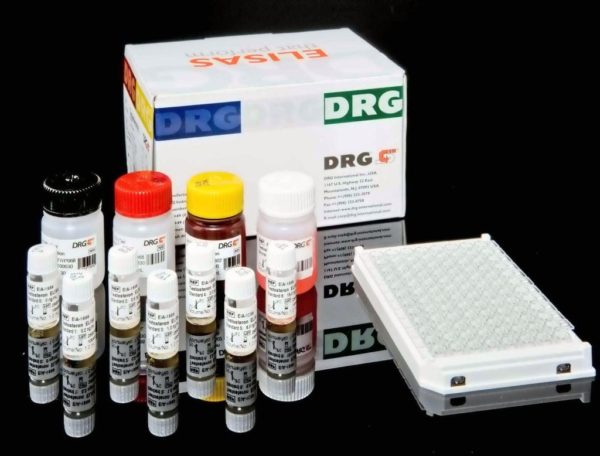Description
The Resistin (human) ELISA is a sandwich enzyme immunoassay for the quantitative measurement of human resistin.
Resistin, a product of the RSTN gene, is a peptide hormone belonging to the class of cysteine-rich secreted proteins which is termed the RELM family, and is also described as ADSF (Adipose Tissue-Specific Secretory Factor) or FIZZ3 (Found in Inflammatory Zone). Human resistin contains 108 amino acids as a prepeptide, and its hydrophobic signal peptide is cleaved before its secretion. Resistin circulates in human blood as a dimeric protein consisting of two 92 amino acid polypeptides, which are disulfide-linked via Cys26. Much
of the early investigations about the resistin molecule are based on the mouse model. Resistin, produced and secreted primarily by adipocytes in mice, acts on skeletal muscle myocytes, hepatocytes and adipocytes themselves so that it reduces their sensitivity to insulin. Steppan et al. have suggested that resistin suppresses the ability of insulin to stimulate glucose uptake. Other studies have shown that mouse resistin increases during the differentiation of adipocytes, but it also seems to inhibit adipogenesis. Compared to the mouse model, human adipogenic differentiation is likely to be associated with a down regulation of resistin gene expression. On the other hand, resistin was found to be expressed at high levels in human monocytes, macrophages and bone marrow. Recent investigations have shown that human resistin is correlated with metabolic syndrome and obesity-related disorders. Malo et al. have reported that resistin levels are positively associated with waist circumference, tumor necrosis factor-_, and insulin resistance assessed by the homeostasis model, and inversely correlated with total cholesterol, HDL cholesterol, and LDL cholesterol. Moreover, Sadhasiv et al. found a positive correlation of SAT (subcutaneous adipose tissue) resistin mRNA expression with serum resistin, BMI and insulin resistance (HOMA index). Based on the above reports human resistin might be an important marker that acts as the link between obesity and insulin resistance. Resistin can play a role also in inflammation processes and in atherosclerosis.Clinical use and areas of investigation:Energy metabolism and body weight regulationMetabolic syndromeInflammationAtherosclerosis
In the DRG Resistin (human) ELISA, standards, quality controls and samples are incubated in microplate wells pre-coated with polyclonal anti-human resistin antibody. After 60 minutes incubation and washing, biotin-labelled second polyclonal anti-human resistin antibody is added and incubated with captured resistin for 60minutes. After another washing, streptavidin-HRP conjugate is added. After 60 minutes incubation and the last washing step, the remaining conjugate is allowed to react with the substrate solution (TMB). The reaction is stopped by addition of acidic solution and absorbance of the resulting yellow product is measured. The absorbance is proportional to the concentration of resistin. A standard curve is constructed by plotting absorbance values against concentrations of standards, and concentrations of unknown samples are determined using this standard curve.




